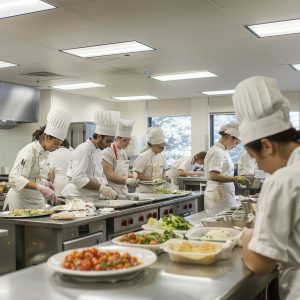What to Do When Your First Choice Culinary School Says ‘No’
Getting into culinary school is a moment of big excitement—especially if you’ve had your sights set on a particular school or institution. But what if you get a culinary school rejection?
Although many culinary schools (especially those at the vocational or community college level) only require students to have a high school diploma or GED, some bigger-name institutions like The Art Institute have stricter admissions requirements and a long waiting list to get in.
But don’t worry: if you’ve had your sights set on a school like this and you don’t get in, there are alternatives you can consider.
What to Expect from a Selective Admissions Process
Although all culinary schools are different, those that are more competitive tend to have similar requirements. These include:
- High School Diploma/GED
- Minimum GPA Requirements
- Teacher/Employer Recommendations
- Application Essays
- Assessment Test Scores (Math and Writing)
- Food Preparation Experience
You might also find that there are long wait lists to get in. This means that you will eventually have a place but it will take a few years before your spot opens up.
If You Don’t Get Accepted
If you aren’t accepted to your top choice culinary school, that doesn’t mean your dreams of becoming a chef will never happen. You might be able to try the following depending on the reasons you didn’t get in and your professional goals.
Apply for the next quarter, semester, or year. Sometimes, one year’s applicants can be much more competitive than the following year’s. If you’re willing and able to wait, you can always try again later.
Re-test. If you didn’t do well on your entrance exam, take some time to study and test again. Most schools accept later test scores if they show a marked improvement.
Get more culinary experience. This one is perfect if you are unsure whether culinary school suits you or prefer on-the-job training. Take some time to work in a restaurant or bakery and start building your skills now.
Apply to another school. No two culinary schools are created equal, but that doesn’t mean you can’t get a good education at either one. In many cases, what you get out of culinary school is exactly what you put into it—and if you’re willing to work hard, you can get a great education elsewhere. Falling short of a goal is never fun, but the most important thing is not losing sight of the bigger picture.
Not getting accepted to your first-choice culinary school might be a disappointment, but it’s not the end of the road. Many great chefs went to smaller schools or even learned on the job and still had what it took to be successful!











